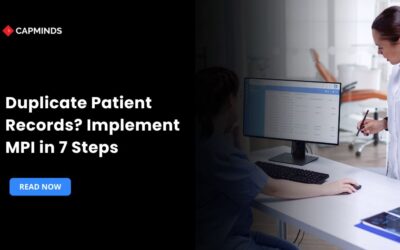The Business Case for Building a Custom Patient Portal in 2026
Healthcare executives are under more pressure than ever to enhance clinical results, reduce expenses, and provide patients with the experiences they anticipate from contemporary digital services. A well-designed custom patient portal transforms patient engagement, care coordination, and revenue cycle performance, while off-the-shelf patient portals can help you get there. The business case for investing in a custom patient portal in 2026 is explained in this blog post, along with the key capabilities that produce value, quantifiable results to anticipate, cost and risk considerations, and a practical implementation checklist that your leadership team can utilize.
Why build custom rather than buy?
Deeply aligned user experience
- Your personnel and patients are frequently forced into generic flows by off-the-shelf portals.
- Your contact center’s operations, your doctors’ practices, and the ways your communities choose to communicate (e.g., language needs, mobile-first vs. desktop) can all be reflected in the interactions you establish with a customized portal.
- This alignment increases acceptability and reduces training overhead because the digital process mimics reality rather than imposing new procedures.
Tailored clinical workflows
- Imagine operative pathways that direct a surgical patient through pre-operative testing, e-consents, payment, and discharge follow-up without the need for manual handoffs.
- Custom portals can be used to mimic these multi-step, multi-department workflows and integrate business criteria (such as insurance verification levels and high-risk flags) that are hard for prefabricated systems to replicate.
Interoperability on your terms
- Custom development means you select the integration architecture and standards (FHIR, SMART on FHIR, HL7) that work with your EHR, middleware, and analytics stack.
- This eliminates the dependence on a vendor’s release cadence and enabling faster pilots with new RPM or telehealth vendors.
Financial and strategic control
- Owning the product roadmap gives you authority over licensing, analytics, and data access.
- Keep the freedom to charge for patient services (such as premium telehealth packages or online scheduling fees) if needed and steer clear of the per-user or per-feature levies that are common with third-party portals.
High-value capabilities to include (and why they matter)
Below each capability is followed by the direct business benefit and an adoption tip.
1. Patient Front-End (Engagement & Access)
Modern, Mobile-First UI
In 2026, a modern, mobile-first interface that satisfies patients’ expectations from consumer platforms must be the initial step in creating a personalized patient portal. The majority of American adults—including the elderly, whose adoption rates have dramatically increased—use cellphones as their primary digital touchpoint. A mobile-first strategy ensures quicker load times, easy navigation, and an interface optimized for touch interactions rather than desktop-only layouts.
Complex forms or pages that require pinching and zooming in keep patients from giving up on self-registration and online appointment scheduling, which greatly increases conversion rates. Additionally, a contemporary front-end increases patient happiness, which is directly linked to portal re-engagement and loyalty. Organizations can use Progressive Web App (PWA) capabilities to improve accessibility and adoption.
This results in a wider audience and fewer IT support problems by enabling patients—even those on low-end or older devices—to enjoy a near-native experience without installing an app.
Unified Patient Record View
Presenting a cohesive, clinically relevant view of the patient record across multisite service lines, specialties, and partner networks is one of a custom portal’s most potent differentiators. In addition to overwhelming patients and failing to lessen clinical workload, off-the-shelf solutions frequently display disjointed information or crowded interfaces.
Medication, allergies, lab results, physician notes, future appointments, and past imaging are all neatly and prioritizedly combined in a well-thought-out unified patient record.
- Providing this precision-focused presentation significantly reduces call center questions such as “Do I need this medication?” or “What were the results of my last test?”
- Moreover, clinicians benefit as well, since patients show up to visits better informed and prepared.
- Hospitals minimize overwhelming patients while maintaining transparency and safety by just displaying the most pertinent information up front and permitting deeper navigation as necessary.
Intelligent Self-Scheduling
One of the most important features for both patient happiness and operational effectiveness is still self-scheduling. Hospital networks may create intelligent, rules-based scheduling logic that aligns with actual clinical operations with a custom portal, something that generic solutions seldom accomplish.
Based on visit kinds, provider availability, referral criteria, and clinical needs, intelligent matching guarantees that patients can schedule correctly.
This minimizes the number of incoming calls, decreases scheduling errors, and more reliably fills available slots. The system can enable tiered scheduling flows in place of strict scheduling templates, wherein high-complexity visits demand referral validation, certain appointments are booked instantaneously, and some require physician permission. Systems can increase fill rates and recover lost income associated with cancellations or vacant slots by incorporating user-friendly waitlist services with automated slot alerts.
Secure Messaging & Virtual Visits
Modern care models that prioritize timely access, care continuity, and efficient triage are increasingly including virtual visits and encrypted texting. Through a personalized patient interface, health systems can integrate messages straight into the patient’s clinical record, ensuring that no correspondence is misplaced or inconsistently documented.
Clinicians’ workloads are reduced, and billing procedures pertaining to digital contacts are made easier. By eliminating friction and moving low-acuity situations away from in-person consultations, virtual visits built right into the portal free up clinic space for more complex care.
Quick reactions, shorter triage times, and simpler follow-ups are all advantageous to patients. In the meantime, health systems are able to meet expectations for convenient access and generate cash from telehealth.
Paperless Intake & E-Consents
The administrative burden and day-of delays that interfere with clinic operations can be significantly decreased by digitizing intake forms and consents. Forms on a custom portal can automatically pre-fill with data that is already on file, increasing accuracy and decreasing patient annoyance.
Long forms are made more manageable by progressive disclosure approaches, in which patients only see the fields pertinent to their ailment or type of visit. This lowers last-minute cancellations brought on by inadequate documentation, raises completion rates, and decreases missing information.
When included in the workflow, digital consents also guarantee legal and regulatory compliance while streamlining perioperative procedures.
Personalized Care Plans
Maternal health, oncology paths, surgical recovery, chronic illness management, and other longitudinal care journeys are all supported by personalized care plans.
- These plans can be highly customized and dynamic, reflecting both real-time patient-generated health data and clinician-driven instructions, thanks to a unique interface.
- Reminders, detailed instructions, follow-up requirements, medication adherence prompts, and device data ingestion from RPM tools can all be incorporated into personalized plans.
- This proactive strategy gives patients a clear road map for treating their diseases, increases adherence, and lowers avoidable readmissions.
Incorporating progress tracking and automatic nudges improves patient accountability and provides clinicians with an organized, data-rich perspective of patient development.
Related: Building Patient Portals on Top of OpenEMR: Tech Stack, UX, and Authentication
2. Revenue Cycle & Operations
Real-Time Eligibility Checks
The patient portal’s real-time eligibility verification feature guarantees that patients and staff are aware of coverage details at the time of appointment scheduling.
This helps patients make educated decisions about their financial obligations and lowers downstream denials brought on by misconceptions about coverage. Transparency and trust are increased when a condensed benefits summary is shown at the time of booking.
Patients are less likely to dispute charges or cancel at the last minute when they can view real-time eligibility and predicted costs, which improves revenue cycle operations and reduces administrative escalations.
Upfront Estimates & Online Payments
Patient happiness and the financial stability of health systems are significantly influenced by payment transparency. Hospitals may provide precise, customized cost estimates for future appointments and operations through a unique gateway, allowing patients to make appropriate plans.
- This openness lowers bad debt and increases pre-visit collections.
- Flexible payment choices, such as installments, payment plans, or financial help pathways based on household income or qualifying requirements, can also be shown on the portal.
- Hospitals can greatly enhance digital collections and lessen call center burdens by consolidating all payment actions—estimates, bills, receipts, and payment history—into a single, user-friendly environment.
Automated Pre-Visit Collections & Reminders
One of the best strategies to decrease no-shows and last-minute cancellations is to automate financial reminders and pre-visit instructions. Patients are more likely to confirm or reschedule ahead of time when they receive timely reminders via email, SMS, or push notifications. This helps hospitals fill available slots and preserve operational efficiency.
By directly connecting these reminders to clinical requirements—like fasting or medication guidelines—and connecting them to billing portals for pre-visit payments, a custom portal can improve them. Administrative intervention is further reduced by providing a single-tap confirmation or rescheduling action, which eliminates friction and improves user experience.
Patient Payment Plans
Hospitals can support patients who might have significant out-of-pocket expenses while still making a profit thanks to flexible payment arrangements. Personalized payment alternatives based on patient profiles, balances, or clinical routes are made possible by a unique gateway.
Health systems can provide automated, convenient, and consistent payment structures by interacting with internal or external funding systems. In the end, this improves patient satisfaction and revenue retention by reducing the need for printed statements, manual collections, and follow-up calls. Patients who are able to digitally manage their medical costs are less likely to put off future care because they are worried about money.
3. Clinical & Care Coordination
Care-Team Assignment & Notifications
Timely communication and well-defined roles are essential for efficient care coordination. By automatically assigning care teams based on service lines, conditions, or clinical pathways, a personalized portal can help patients understand who is in charge of what parts of their treatment.
Automated notifications make sure that the right team members receive follow-up assignments, such as lab evaluations, discharge instructions, or post-visit check-ins. The system has the ability to automatically escalate assignments to supervisors or backup clinicians when they are not completed. This improves overall care continuity, lowers patient leakage, and increases follow-up compliance.
Integration with RPM/IoT
Clinicians can obtain timely information about patients’ health in between visits by integrating IoT health tools and remote patient monitoring devices into the portal. A tailored site can compile and analyze trends—highlighting out-of-range readings or abrupt changes that call for intervention—instead of flooding clinicians with unprocessed device data.
This proactive monitoring allows for the early detection of deterioration in the treatment of chronic diseases like diabetes or hypertension, potentially avoiding hospital stays or emergency visits. Clinicians receive useful, relevant data free from the clutter of unfiltered analytics, while patients benefit from constant support.
Clinical Decision Support Hooks
Clinicians can promptly detect high-risk issues or symptom escalations thanks to clinical decision support (CDS) features integrated into messaging and triage workflows. Threshold-based triggers that identify troubling patterns, including worsening symptoms mentioned in encrypted messaging or aberrant self-reported vitals, can be created using a custom gateway.
In order to improve outcomes and lessen clinician stress brought on by manually prioritizing each patient communication, these alerts can be sent to the proper care teams for prompt intervention. As doctors verify and enhance the workflows, businesses can refine them over time by starting with simple rules that provide a safe and manageable baseline.
Care Gap Closure Workflows
Sophisticated care gap algorithms that automatically identify past-due screenings, immunizations, tests, or follow-up care based on clinical standards and patient history are made possible via a unique gateway.
Health systems can promote prompt actions that enhance population health indicators and satisfy value-based care contract criteria by incorporating these gaps directly into the patient’s task list and the provider’s dashboard. In order to ensure that patients comprehend the significance of the suggested action and can easily take the next step, templated outreach messages might set off reminders or schedule prompts.
4. Data, Analytics & Automation
Event Stream & Analytics Layer
Every significant action on the portal, including logins, appointment scheduling, cancellations, payments, chat threads, and more, is recorded in a real-time event stream.
Health institutions may analyze ROI, comprehend engagement patterns, and find bottlenecks in clinical or administrative procedures by feeding this data into an analytics layer.
- This gives leadership teams the ability to make evidence-based decisions regarding future product developments, staffing, and operational improvements.
- Instead of depending on yearly audits or anecdotal input, instrumenting events from the outset guarantees that analytics are reliable and useful, enabling ongoing optimization.
AI-Driven Triage & Nudges
By evaluating behavior and risk indicators to automate triage processes, artificial intelligence can revolutionize patient involvement.
- AI models, for instance, can elevate urgent concerns to physicians, direct low-acuity cases to automated self-care pathways, or classify patient messages into clinical urgency stages.
- Similar to this, AI-driven nudges—like reminders based on a patient’s previous adherence patterns—improve lifestyle changes, prescription compliance, and follow-up attendance.
Health systems can preserve control and transparency by starting with deterministic rules, while progressively adding supervised models improve accuracy and scalability.
A/B Testing Capability
Health systems can validate improvements using actual user behavior instead than conjecture thanks to A/B testing. The portal can experimentally determine which variants of scheduling flows, messaging content, reminder timing, or payment prompts result in the highest level of engagement, the least amount of friction, or the best financial consequences.
When applied to large patient populations, even modest increases in conversion rates or adherence result in significant operational and financial benefits. The portal is no longer a static tool but rather a constantly changing offering thanks to this scientific methodology.
5. Security, Privacy & Compliance
HIPAA-Compliant Architecture
Security is essential to both regulatory compliance and trust. In order to comply with HIPAA regulations, a custom patient portal must implement role-based access control, ensure that all patient data is secured both in transit and at rest, create thorough audit logs, and uphold stringent monitoring procedures.
An incident response plan that has been well documented and tested guarantees that the company is ready for any risks. Integrating compliance into the design from the outset lowers long-term risk, safeguards patient confidence, and avoids expensive infractions or breaches.
SSO / MFA
Multi-factor authentication (MFA) and single sign-on (SSO) simplify the login procedure while greatly lowering the risk of account takeover.
IT personnel can rest easy knowing that access is strictly regulated, while patients benefit from the simplicity of using well-known identity providers or biometric logins on mobile devices. When used properly, MFA and SSO reduce authentication friction, increasing portal use and decreasing support requests about passwords.
Accessibility & Localization
Diverse patient populations, such as those with visual, language, cognitive, or physical impairments, must be taken into consideration by a portal that is truly patient-centered.
Hospitals provide equal access to care by following WCAG 2.1 AA accessibility criteria and providing language localization for the major demographic groups they serve. Because all patients, even those with poor English proficiency, can confidently traverse digital workflows and comprehend instructions, accessible design also lowers missed appointments and compliance gaps.
Business outcomes & KPIs to expect (and how to measure them)
List specific KPIs, realistic targets, and measurement methods.
- Active portal adoption: Target 35–55% active users in 12 months. Measure: DAU/MAU vs total patient population; segment by age and clinic.
- Digital scheduling share: Aim to migrate 40–70% of eligible appointments to self-scheduling for ambulatory specialties in 12 months. Measure: digital bookings / total bookings.
- No-show reduction: Expect 10–30% reduction depending on specialty with deposits + reminders. Measure: compare no-show rates pre/post, controlling for seasonality.
- Call center deflection: Target 20–40% reduction in scheduling and status calls. Measure: call volume by reason code.
- Upfront collections & DSO: 15–40% increase in online collections and measurable DSO improvement. Measure: compare online payment volumes, average days to payment.
- Clinical outcome signals: e.g., reduced avoidable ED visits in RPM cohorts within 12–18 months. Measure: matched-cohort analyses with claims/EHR data.
- Patient satisfaction (NPS/CMS CAHPS digital items): Track digital experience component changes monthly.
Related: EHR vs CRM vs Patient Portal: Where Should You Invest First?
Typical ROI levers (how you pay back the investment)
Break down where returns come from and how to model them.
- Labor cost reduction: Quantify FTE hours saved from registration, scheduling, and follow-up tasks.
- Revenue preservation & increase: Model incremental appointments filled, increased capture of ancillary services, and collections uplift.
- Risk & compliance savings: Estimate avoided penalties and reduced vendor overage costs.
- Strategic value: Include conservative estimates for patient retention and referral capture; these are longer-term but material.
When building a financial model, present a 3-year TCO vs. three-year expected savings and revenue uplift under conservative, base, and optimistic adoption scenarios.
CapMinds Digital Health Technology Services: Your Partner for Custom Patient Portal Success
A modern patient portal is no longer a “nice-to-have”, it is a core operational engine for care delivery, patient engagement, and revenue performance.
If you’re considering building or optimizing a custom patient portal in 2026, CapMinds brings the complete digital health technology services required to turn your strategy into a working, scalable product.
Our healthcare-focused engineering, interoperability expertise, and deep workflow understanding ensure your portal doesn’t just look good, it works exactly the way your clinicians, patients, and operations teams need. At CapMinds, we support every phase of your digital transformation with services such as:
- Custom Patient Portal Development & Modern UI Engineering
- EHR/EMR Integration (FHIR, HL7, SMART on FHIR)
- Telehealth & Virtual Care Integration Services
- RPM & IoT Device Integration Services
- Healthcare Workflow Automation & RPA
- HIPAA-Compliant Cloud & Security Services
- Healthcare Data Analytics & Real-Time Event Stream Engineering
By partnering with CapMinds, you gain a trusted health-tech service team that delivers secure, scalable, custom portal solutions aligned to your clinical workflows and long-term digital roadmap. Let’s build a patient experience that improves outcomes, reduces costs, and accelerates your digital future.




